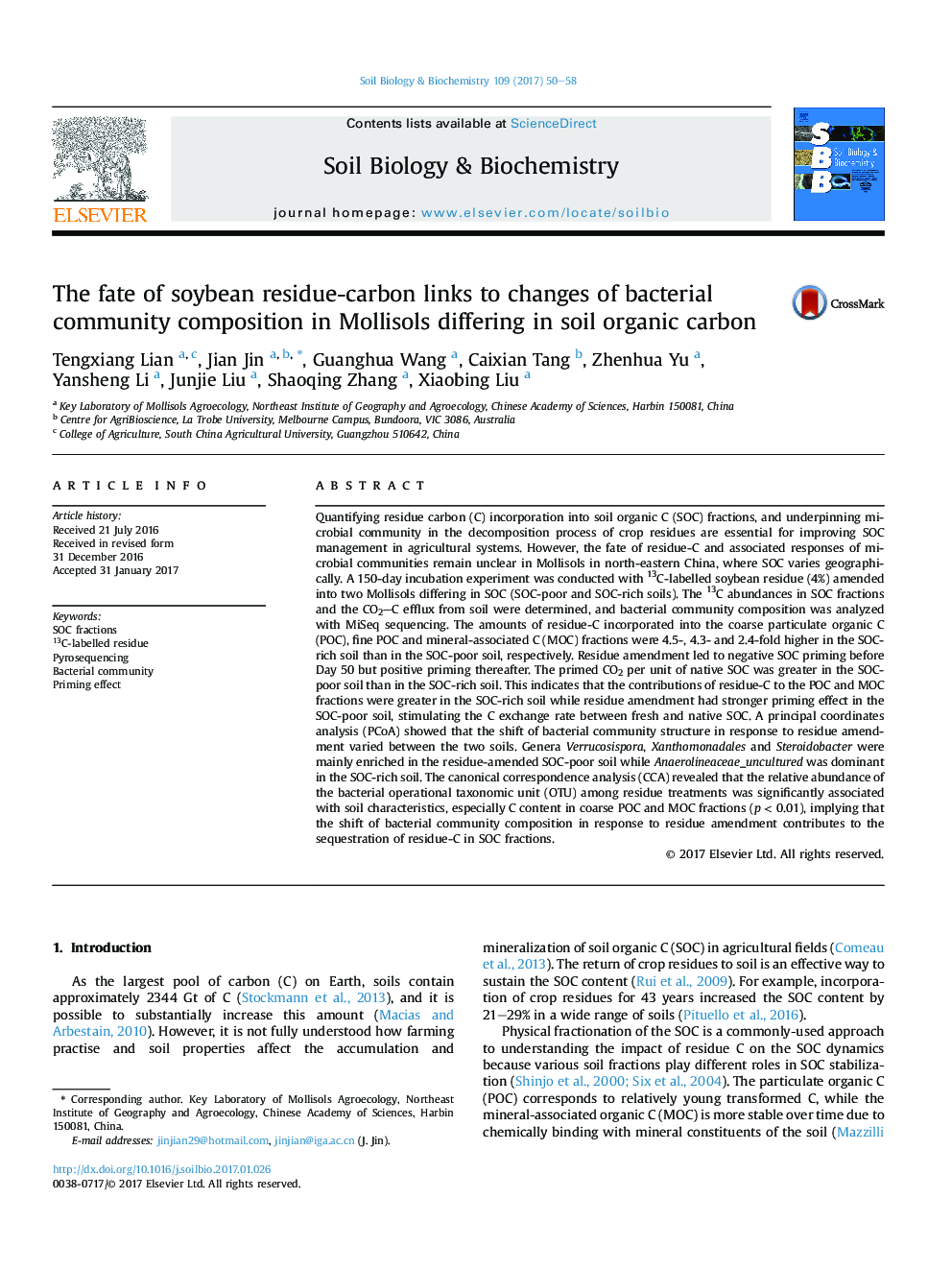| کد مقاله | کد نشریه | سال انتشار | مقاله انگلیسی | نسخه تمام متن |
|---|---|---|---|---|
| 5516474 | 1542575 | 2017 | 9 صفحه PDF | دانلود رایگان |
- We used 13C-labelled residue to quantify its contribution to SOC fractions in Mollisols.
- The residue-induced priming effect of native SOC varied in soils.
- The shift of bacterial community composition in response to residue amendment was estimated at the OTU level.
- The correspondent change of OTUs abundances was associated with the sequestration of residue-C in SOC fractions.
Quantifying residue carbon (C) incorporation into soil organic C (SOC) fractions, and underpinning microbial community in the decomposition process of crop residues are essential for improving SOC management in agricultural systems. However, the fate of residue-C and associated responses of microbial communities remain unclear in Mollisols in north-eastern China, where SOC varies geographically. A 150-day incubation experiment was conducted with 13C-labelled soybean residue (4%) amended into two Mollisols differing in SOC (SOC-poor and SOC-rich soils). The 13C abundances in SOC fractions and the CO2-C efflux from soil were determined, and bacterial community composition was analyzed with MiSeq sequencing. The amounts of residue-C incorporated into the coarse particulate organic C (POC), fine POC and mineral-associated C (MOC) fractions were 4.5-, 4.3- and 2.4-fold higher in the SOC-rich soil than in the SOC-poor soil, respectively. Residue amendment led to negative SOC priming before Day 50 but positive priming thereafter. The primed CO2 per unit of native SOC was greater in the SOC-poor soil than in the SOC-rich soil. This indicates that the contributions of residue-C to the POC and MOC fractions were greater in the SOC-rich soil while residue amendment had stronger priming effect in the SOC-poor soil, stimulating the C exchange rate between fresh and native SOC. A principal coordinates analysis (PCoA) showed that the shift of bacterial community structure in response to residue amendment varied between the two soils. Genera Verrucosispora, Xanthomonadales and Steroidobacter were mainly enriched in the residue-amended SOC-poor soil while Anaerolineaceae_uncultured was dominant in the SOC-rich soil. The canonical correspondence analysis (CCA) revealed that the relative abundance of the bacterial operational taxonomic unit (OTU) among residue treatments was significantly associated with soil characteristics, especially C content in coarse POC and MOC fractions (p < 0.01), implying that the shift of bacterial community composition in response to residue amendment contributes to the sequestration of residue-C in SOC fractions.
Journal: Soil Biology and Biochemistry - Volume 109, June 2017, Pages 50-58
